As a member of the Louisiana Digital Consortium, THNOC contributes to the Louisiana Digital Library. Below are links to THNOC holdings posted to the Louisiana Digital Library.
Alfred and William Waud Collection
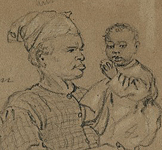 The London-born Wauds' specialty was producing drawings—from quick sketches to finished works—of places, people, and events assigned to them by editors. These drawings were the basis for wood-engraved illustrations in the periodicals published by their employers. Alfred Waud was hired by the New York Illustrated News in 1860, and he remained with the News for nearly two years covering the opening months of the Civil War before joining the staff of Harper's Weekly in early 1862. William Waud worked as a special artist during the Civil War for Frank Leslie's Illustrated Newspaper. The Waud Collection presents a visually fascinating history of America in the mid-19th century, covering subjects as diverse as the reconstructed South and the townships that dotted both banks of the nation's largest river system.
The London-born Wauds' specialty was producing drawings—from quick sketches to finished works—of places, people, and events assigned to them by editors. These drawings were the basis for wood-engraved illustrations in the periodicals published by their employers. Alfred Waud was hired by the New York Illustrated News in 1860, and he remained with the News for nearly two years covering the opening months of the Civil War before joining the staff of Harper's Weekly in early 1862. William Waud worked as a special artist during the Civil War for Frank Leslie's Illustrated Newspaper. The Waud Collection presents a visually fascinating history of America in the mid-19th century, covering subjects as diverse as the reconstructed South and the townships that dotted both banks of the nation's largest river system.
Charles L. Franck / Franck-Bertacci Photographers
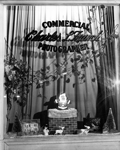 Charles L. Franck was a commercial photographer in New Orleans whose individual career and successors covered all but the first decade of the 20th century. In 1955, his studio was purchased by Alfred L. Bertacci Sr., who continued to operate within the same scope of assignments as Franck had done. Tens of thousands of photographs and negatives from the Franck and Franck-Bertacci studios, held by THNOC, chronicle the face and growth of Louisiana, and New Orleans in particular, during the 20th century. The change of the city through its photographed character focuses on major industries (the port, construction, transportation) during a period of racial integration, labor disputes, and urban growth. Social and cultural events–Mardi Gras, weddings, private parties–all feature in the collection as well. As the Franck Collection approaches the present day, the photographs of major building projects (the Louisiana Superdome, bridges across the Mississippi River, nuclear power plants, and petrochemical complexes) touch on issues of suburban and exurban expansion, and environmental issues.
Charles L. Franck was a commercial photographer in New Orleans whose individual career and successors covered all but the first decade of the 20th century. In 1955, his studio was purchased by Alfred L. Bertacci Sr., who continued to operate within the same scope of assignments as Franck had done. Tens of thousands of photographs and negatives from the Franck and Franck-Bertacci studios, held by THNOC, chronicle the face and growth of Louisiana, and New Orleans in particular, during the 20th century. The change of the city through its photographed character focuses on major industries (the port, construction, transportation) during a period of racial integration, labor disputes, and urban growth. Social and cultural events–Mardi Gras, weddings, private parties–all feature in the collection as well. As the Franck Collection approaches the present day, the photographs of major building projects (the Louisiana Superdome, bridges across the Mississippi River, nuclear power plants, and petrochemical complexes) touch on issues of suburban and exurban expansion, and environmental issues.
Clarence John Laughlin Photograph Collection
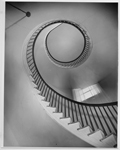 The Historic New Orleans Collection is the major repository for the photographs and writings of pioneer surrealist and experimental photographer Clarence John Laughlin (1905–1985), a native of Louisiana. Included in this digital collection are master prints, work prints, unique collages, and color experiments, as well as selected images by other photographers. The Laughlin Collection chronicles an active career that stretched from the early 1930s through the late 1960s. Laughlin’s subjects include architecture and cemeteries of New Orleans, historic plantation architecture of southern Louisiana and the lower Mississippi valley, American Victorian architecture, contemporary architecture, interpretive photographic renditions of sculpture, and several series of symbolic photographs that use the camera to probe the subconscious mind.
The Historic New Orleans Collection is the major repository for the photographs and writings of pioneer surrealist and experimental photographer Clarence John Laughlin (1905–1985), a native of Louisiana. Included in this digital collection are master prints, work prints, unique collages, and color experiments, as well as selected images by other photographers. The Laughlin Collection chronicles an active career that stretched from the early 1930s through the late 1960s. Laughlin’s subjects include architecture and cemeteries of New Orleans, historic plantation architecture of southern Louisiana and the lower Mississippi valley, American Victorian architecture, contemporary architecture, interpretive photographic renditions of sculpture, and several series of symbolic photographs that use the camera to probe the subconscious mind.
Free People of Color in Louisiana: Revealing an Unknown Past
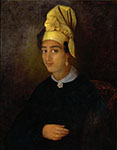 Free people of color--people of African descent who lived in colonial and antebellum America and were born free or escaped the bonds of slavery before it was abolished in 1865--made significant contributions to the economies and cultures of the communities in which they lived. Free People of Color in Louisiana: Revealing an Unknown Past is a collaboration among LSU Libraries Special Collections, the Historical Center at the Louisiana State Museum in New Orleans, the Louisiana Division of the New Orleans Public Library, The Historic New Orleans Collection, and Tulane University’s Louisiana Research Collection to bring together digitally the personal and family papers of free people of color and public records that relate to the group from the repositories’ collections. The project is made possible through a grant from the National Endowment for the Humanities.
Free people of color--people of African descent who lived in colonial and antebellum America and were born free or escaped the bonds of slavery before it was abolished in 1865--made significant contributions to the economies and cultures of the communities in which they lived. Free People of Color in Louisiana: Revealing an Unknown Past is a collaboration among LSU Libraries Special Collections, the Historical Center at the Louisiana State Museum in New Orleans, the Louisiana Division of the New Orleans Public Library, The Historic New Orleans Collection, and Tulane University’s Louisiana Research Collection to bring together digitally the personal and family papers of free people of color and public records that relate to the group from the repositories’ collections. The project is made possible through a grant from the National Endowment for the Humanities.
Gulf South Decorative and Fine Arts Database
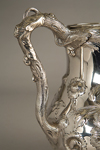 The Gulf South Decorative and Fine Arts Database (DAGS) fellows and staff have cataloged over 1,000 objects in private collections dating from the 18th century through the Civil War since the first field study in 2011. The survey spans Alabama, Louisiana, and Mississippi, and DAGS is continually expanding their reach throughout the region. So far, the Gulf South Field Study has only scratched the surface of the rich cultural material that survives in the region. In addition to expanding into new physical areas, DAGS also seeks to explore new material evidence of the cultural diversity represented in the Gulf South. As cataloging efforts continue, new information and images will be added to this database in order to draw attention to the objects and to the research possibilities that they present.
The Gulf South Decorative and Fine Arts Database (DAGS) fellows and staff have cataloged over 1,000 objects in private collections dating from the 18th century through the Civil War since the first field study in 2011. The survey spans Alabama, Louisiana, and Mississippi, and DAGS is continually expanding their reach throughout the region. So far, the Gulf South Field Study has only scratched the surface of the rich cultural material that survives in the region. In addition to expanding into new physical areas, DAGS also seeks to explore new material evidence of the cultural diversity represented in the Gulf South. As cataloging efforts continue, new information and images will be added to this database in order to draw attention to the objects and to the research possibilities that they present.
John T. Mendes Photograph Collection
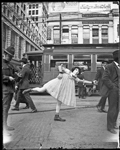 Between 1916 and the mid-1930s, John Tibule Mendes (1888–1965) was a consistent and curious observer of life in New Orleans. The 609 gelatin dry plate negatives that form the Mendes archive were donated to The Historic New Orleans Collection by Waldemar S. Nelson in 2003. Waldemar and Opal Nelson were Mendes's neighbors and ultimately purchased his house, finding there a box containing his negatives. Mendes appears to have been purely an amateur photographer; his photographs capture children at play, Mardi Gras, street scenes, the demolition of historic buildings, and news events of his day. Although a handful of the negatives are signed by Mendes (as one would do in order to identify authorship upon publication), no records indicate that these photographs (or any others he made) were published in his lifetime.
Between 1916 and the mid-1930s, John Tibule Mendes (1888–1965) was a consistent and curious observer of life in New Orleans. The 609 gelatin dry plate negatives that form the Mendes archive were donated to The Historic New Orleans Collection by Waldemar S. Nelson in 2003. Waldemar and Opal Nelson were Mendes's neighbors and ultimately purchased his house, finding there a box containing his negatives. Mendes appears to have been purely an amateur photographer; his photographs capture children at play, Mardi Gras, street scenes, the demolition of historic buildings, and news events of his day. Although a handful of the negatives are signed by Mendes (as one would do in order to identify authorship upon publication), no records indicate that these photographs (or any others he made) were published in his lifetime.
The photographer's unillustrated self-published memoir, Dogs in My Life (1964), emphasizes the canine pets that served as Mendes's companions over the course of six decades, but also provides background information about his life. Photographs of dogs appear throughout the range of Mendes's work but are no more prevalent than his depictions of everyday life in early 20th-century New Orleans. The posthumously published Dogs in My Life: The Photographs of John Tibule Mendes (University of New Orleans Press, 2009) juxtaposes Mendes's autobiographical writings with photographs taken over the course of his career.
Louisiana Decoys and Wildfowl Artifacts
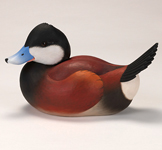 The Anne and Dick Stephens Collection of Louisiana Decoys and Wildfowl Artifacts includes more than 300 hand-carved decoys and other works of art by Southeast Louisiana craftsmen. The collection celebrates the talent and dedication of the artists who devoted themselves to this region's distinct carving traditions.
The Anne and Dick Stephens Collection of Louisiana Decoys and Wildfowl Artifacts includes more than 300 hand-carved decoys and other works of art by Southeast Louisiana craftsmen. The collection celebrates the talent and dedication of the artists who devoted themselves to this region's distinct carving traditions.
Maps from The Historic New Orleans Collection
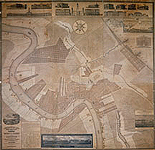 The Historic New Orleans Collection has extensive holdings of significant manuscript and printed maps. Acquisition was begun by THNOC's founder, General L. Kemper Williams, in the 1920s and '30s. Since then considerable additions have been made including a wide range of maps dating from early colonial times to the present.
The Historic New Orleans Collection has extensive holdings of significant manuscript and printed maps. Acquisition was begun by THNOC's founder, General L. Kemper Williams, in the 1920s and '30s. Since then considerable additions have been made including a wide range of maps dating from early colonial times to the present.
Painting in Louisiana from The Historic New Orleans Collection
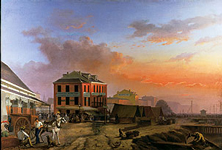 Painting in Louisiana from The Historic New Orleans Collection consists of several hundred paintings, including oils and watercolors by Louisiana and Southern artists. The paintings held by THNOC have a pronounced historical interest, documenting persons, places, and events in Louisiana and by implication, the Gulf South. As a whole, the THNOC painting collection forms a visual narrative of the origins and development of art and society in Louisiana.
Painting in Louisiana from The Historic New Orleans Collection consists of several hundred paintings, including oils and watercolors by Louisiana and Southern artists. The paintings held by THNOC have a pronounced historical interest, documenting persons, places, and events in Louisiana and by implication, the Gulf South. As a whole, the THNOC painting collection forms a visual narrative of the origins and development of art and society in Louisiana.
Leon Trice Photograph Collection
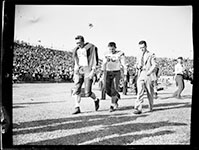 Leon Trice Jr. (1898–1976) was a news and studio photographer active in New Orleans between 1920 and the early 1970s. Trice was born in Gainesville, Texas, and came to New Orleans in 1921, taking a staff photographer job at the New Orleans States. In the 1930s Trice was a photographer with the Associated Press, and he became known for his photos of Huey P. Long and his political circle. Trice opened his own studio in 1937 and continued his career with specialties in sports and commercial photography. Trice documented the sporting events of the New Orleans Mid-Winter Sports Association from 1946 to 1965, including the Sugar Bowl football game. Trice is also known for his striking studio portraits of white Mardi Gras royalty, debutantes, brides, and children. Outside the studio he captured the daily lives of white Louisiana citizens and social events.
Leon Trice Jr. (1898–1976) was a news and studio photographer active in New Orleans between 1920 and the early 1970s. Trice was born in Gainesville, Texas, and came to New Orleans in 1921, taking a staff photographer job at the New Orleans States. In the 1930s Trice was a photographer with the Associated Press, and he became known for his photos of Huey P. Long and his political circle. Trice opened his own studio in 1937 and continued his career with specialties in sports and commercial photography. Trice documented the sporting events of the New Orleans Mid-Winter Sports Association from 1946 to 1965, including the Sugar Bowl football game. Trice is also known for his striking studio portraits of white Mardi Gras royalty, debutantes, brides, and children. Outside the studio he captured the daily lives of white Louisiana citizens and social events.
William Russell Photograph Collection
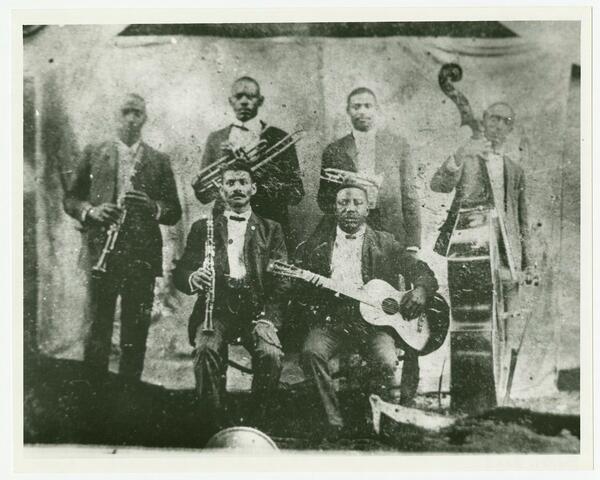 The William Russell Photographic Collection spans almost a century of jazz history, from Buddy Bolden's band to the George Lewis Trio to the New Orleans Ragtime Orchestra. Russell collected early photographs of some of the first jazz performers and took photographs (or asked others to do so) of performers he met between 1939 and his death in 1992. These photographs show musicians performing, marching in parades and jazz funerals, and at home. Russell also collected images of jazz landmarks, the dance halls, nightclubs, and other venues where jazz was performed, homes of early jazz musicians, and other places associated with the musicians.
The William Russell Photographic Collection spans almost a century of jazz history, from Buddy Bolden's band to the George Lewis Trio to the New Orleans Ragtime Orchestra. Russell collected early photographs of some of the first jazz performers and took photographs (or asked others to do so) of performers he met between 1939 and his death in 1992. These photographs show musicians performing, marching in parades and jazz funerals, and at home. Russell also collected images of jazz landmarks, the dance halls, nightclubs, and other venues where jazz was performed, homes of early jazz musicians, and other places associated with the musicians.
Eugene A. Delcroix Photograph Collection
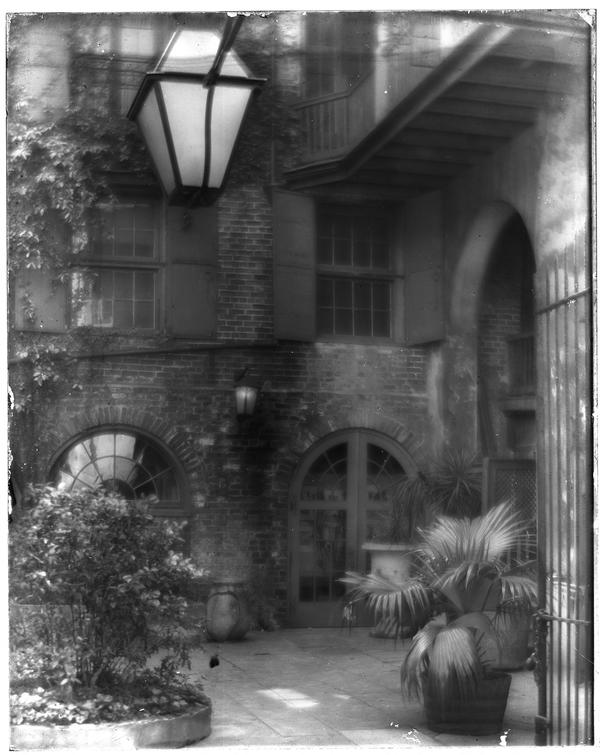 Eugene A. Delcroix (1891-1967) worked as a portrait photographer for the New Orleans firms of C. Bennette Moore and Anthony H. Hitchler before striking out on his own in the 1930s. Although he continued to accept portrait commissions, the subjects for which Delcroix is remembered are Vieux Carre courtyards and ironwork, rafts of water hyacinths on the bayou, and tangles of Spanish moss descending from trees.
Eugene A. Delcroix (1891-1967) worked as a portrait photographer for the New Orleans firms of C. Bennette Moore and Anthony H. Hitchler before striking out on his own in the 1930s. Although he continued to accept portrait commissions, the subjects for which Delcroix is remembered are Vieux Carre courtyards and ironwork, rafts of water hyacinths on the bayou, and tangles of Spanish moss descending from trees.
